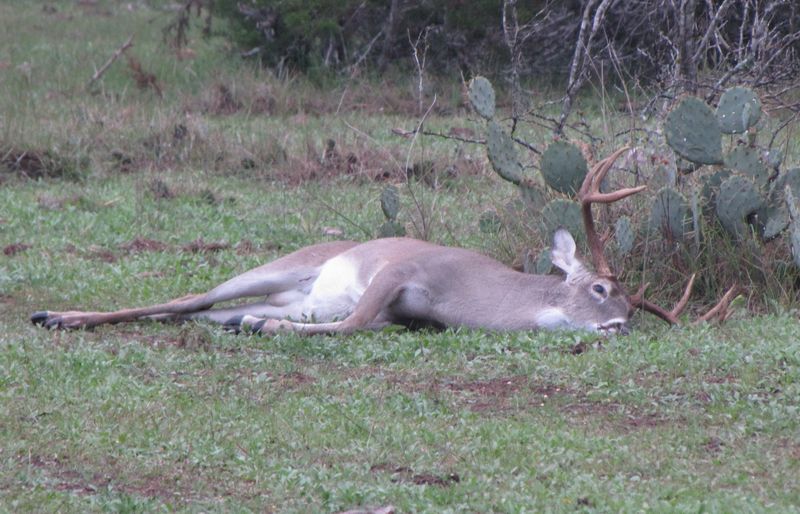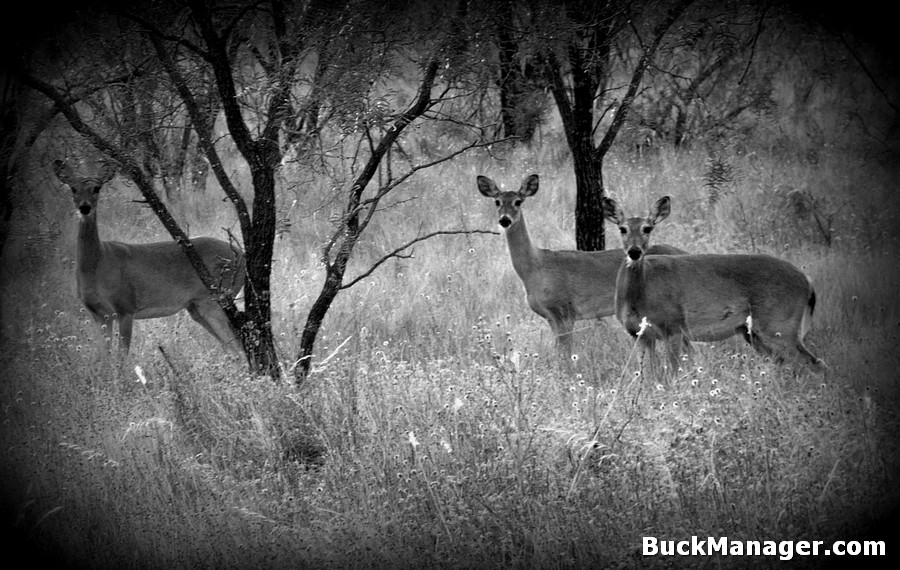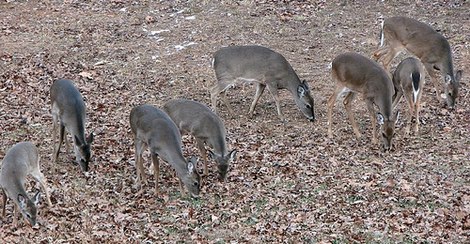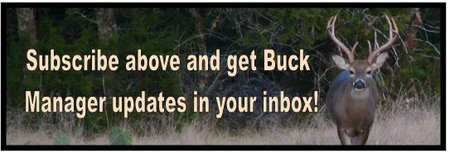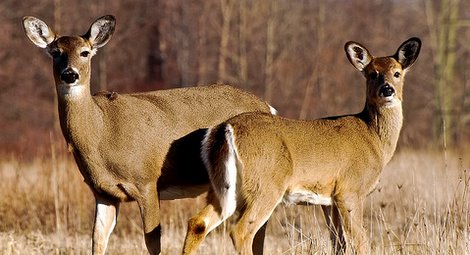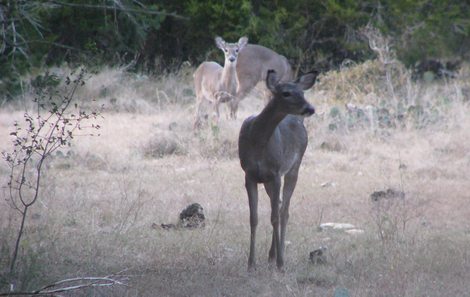When it comes to white-tailed deer management—at any scale—the most important factors are deer density and buck to doe ratio. These two numbers are usually indicative of habitat condition and the reproductive potential of the deer herd. Most hunters continue to talk about buck harvest criteria, and although important, they fail to have a good handle on the deer density and buck to doe ratio in their hunting area! In addition, many landowners overlook habitat conditions and factors that limit fawn production and survival.
White-tailed deer harvest rates are important because they determine not only the number of animals you will shoot this year, but more importantly the number of deer that will survive into next year. This is especially important for the doe population because these animals, depending on deer density and sex ratio, can increase the total deer population prior to the next hunting season by 50% or more. This article discusses population and environmental factors that influence white-tailed deer harvest rates on an annual basis.
Harvest rates can vary annually by habitat quantity, habitat quality, fawn production, and white-tailed deer management objectives. Hunters and landowners looking to maintain healthy age structure in bucks should never harvest over 20% of the buck herd. This holds true whether the buck to doe ratio is 1:10 or 1:1. Of course, if the deer density in the area is held constant, many more bucks can be harvested when there is 1 buck for every 1 doe compared to when there is 1 buck for every 10 does. Many hunters fail to realize that from a population standpoint the types of the bucks being shot is less important as the total number of bucks being removed from the herd. In short, limit buck harvest to less than 20% of the buck population.
Doe harvest management is more important in determining the overall dynamics of a white-tailed deer population in a given area. The doe population determines if a deer population declines, remains stable, or grows. However, the doe population is dependent on, as mentioned prior, habitat quantity, habitat quality, fawn production, and management objectives. Because the doe population in an area depends on these annual factors, so does the annual harvest rates.
Habitat Quantity
This is a measure of the total amount of deer habitat available. Does your property have 100 acres of deer habitat or 1,000 acres of deer habitat? Obviously, more deer habitat correlates with a larger population size. Hunters on 100 acres of habitat can not expect to harvest as many deer as hunters on 1,000 acres of habitat, assuming the deer density in that habitat is the same. If both ranches have the same harvest strategy in place, then the 1,000 acres of habitat can harvest 10 times the number of animals. It’s not because those hunters are greedy, it is just that the total deer harvest for a property should be related to available deer habitat, not just property size. In this example, both ranches could have been 1,000 acres in size. We only discussed available deer habitat on those properties. Property size will not effect the harvest rate, only the total number of animals harvested (because of available habitat).
Habitat Quality
Habitat quality is measured by an area’s ability to provide food, cover, water, and space for white-tailed deer. Deer found on high quality habitat have higher reproductive rates than deer found on low quality habitat. Here is an example of how habitat quality impacts harvest rate: Let’s say that there are two ranches 1,000 acres in size. One provides high quality habitat and the other provides low quality habitat. If we assume that the deer density is the same, then fawn production on the high quality habitat will be higher because there is more food per animal. This high quality habitat means more food per doe, a higher reproductive rate, a higher fawn survival rate, and more bucks and does available for harvest each year. In short, properties with high quality habitat must harvest does at a higher rate to keep the deer population stable.
In Summary
Without a doubt, both habitat quantity and quality impact the annual harvest rates of a deer population. Property size does not impact harvest rate, but smaller properties will harvest fewer animals than larger properties based simply on habitat quantity and differences in the sizes of the deer populations. Habitat quality can vary by property depending on habitat management practices (or lack thereof) and deer found on high quality habitat have higher reproductive success. Because of this habitat effect, properties providing high quality habitat must harvest does at higher rates than properties providing low quality deer habitat. Next week, I will discuss how fawn survival, density, and buck to doe ratio also impact white-tailed deer harvest rates.
